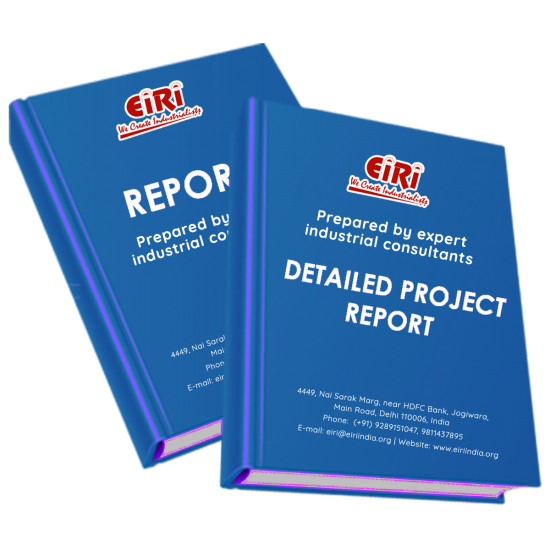Description
INTRODUCTION
WHAT IS TURMERIC?
WHAT IS CURCUMIN?
PRODUCT SPECIFICATION
WHAT IS THE HISTORY OF TURMERIC AND CURCUMIN?
ARE THERE ANY SIDE EFFECTS OR INTERACTIONS?
WHY HASN’T THE PHARMACEUTICAL INDUSTRY PATENTED TURMERIC AND CURCUMIN?
USES AND APPLICATION
IS MOSTLY USED IN THE FOLLOWING FIELDS:-
OPPORTUNITY AND RISE OF TURMERIC AND CURCUMIN
BIOLOGICAL SOURCE AND ACTIVITIES OF CURCUMIN
THE BIOLOGICAL SOURCE OF CURCUMIN
BIOLOGICAL ACTIVITIES OF CURCUMIN
ANTI-INFLAMMATORY PROPERTY
ANTIOXIDANT PROPERTIES
EFFECT OFCURCUMIN ON LYMPHOCYTES
EFFECT OFCURCUMIN ON PLATELET AGGREGATION
PROPERTIES OF CURCUMIN
PRODUCT DETAILS:
PRODUCT SPECIFIC LITERATURE REFERENCE:
GENERAL INFORMATION:
CHEMICAL CHARACTERIZATION OF CURCUMIN
COMPOSITION OF THE FOOD ADDITIVE
PHYSICO-CHEMICAL PROPERTIES
CURCUMIN – THE YELLOW EXTRACT FROM TURMERIC
FIGURE: CURCUMA LONGA (TURMERIC PLANT) WITH ITS RHIZOME OR ROOT
CHEMICAL COMPOSITION OF TURMERIC
FIG : STRUCTURE OF NATURAL CURCUMINOIDS.
BIOLOGICAL ACTIVITY OF TURMERIC AND ITS COMPOUNDS
PHARMACOLOGICAL ACTION OF TURMERIC AND IT’S EXTRACT
FRAGRANCE AND FLAVOUR
RAW MATERIALS SCENARIO (INDIA AND GLOBAL)
INTERNATIONAL SCENARIO
OVERVIEW OF CURCUMIN MARKET
MARKET POSITION OF CURCUMIN
CURCUMIN MARKET CAN BE SEGMENTED ON THE BASIS OF:
THERAPEUTIC APPLICATIONS
GLOBAL MARKET POSITION AND DEMAND OF CURCUMIN
OVERVIEW OF HERBAL MEDICINE IN INDIA
LIST OF MEDICINAL PLANTS WHOSE MARKET POTENTIAL IS VERY HIGH
MARKET POSITION OF HERBAL EXTRACTS
COMPANIES FEATURED
SEGMENTATION
KEY PLAYERS
PRESENT MANUFACTURERS OF CURCUMIN
BUYERS ADDRESSES OF CURCUMIN
MARKET ANALYSIS OF CURCUMIN
GLOBAL CURCUMIN MARKET GROWTH
PROCESS OUTLINE FOR CURCUMIN EXTRACTION
MANUFACTURING PROCESS OF CURCUMIN
RAW MATERIAL REQUIRED:
BASIC PLANT AND MACHINERY REQUIRED
SALIENT FEATURE OF THE PROCESS
MANUFACTURING PROCESS DIAGRAM
BLOCK DIAGRAM FOR CURCUMIN EXTRACTION
TECHNICAL DETAILS FOR CURCUMIN EXTRACTION
METHODS
GRINDING OF DRIED TURMERIC AND SEPARATION
SOLVENT EXTRACTION OF TURMERIC USING ETHANOL AND WATER
SOLVENT EXTRACTION OF TURMERIC (250 ? SIZE) USING ETHANOL AND WATER
MOISTURE ANALYSIS OF DRIED TURMERIC POWDER
OPTIMIZATION OF SOLVENT EXTRACTION OF TURMERIC AT DIFFERENT TIME INTERVALS
OPTIMIZATION OF SOLVENT EXTRACTION METHOD OF TURMERIC
SOLVENT EXTRACTION USING MIXTURE OF SOLVENT OF ETHANOL AND WATER
SOLVENT EXTRACTION OF TURMERIC USING PET ETHER
QUALITATIVE ANALYSIS OF ANTIMICROBIAL ACTIVITY OF CURCUMIN AGAINST E.COLI
RESULT AND DISCUSSION
SOLVENT EXTRACTION OF TURMERIC (250 ? SIZE) USING ETHANOL AND WATER
OPTIMIZATION OF SOLVENT EXTRACTION OF TURMERIC AT DIFFERENT TIME
INTERVALS SOLVENT EXTRACTION USING MIXTURE OF SOLVENT OF ETHANOL AND WATER
SOLVENT EXTRACTION OF TURMERIC USING PET ETHER
EXTRACTION AND PROCESSING OF CURCUMIN
TURMERIC HAS BEEN FOUND TO HAVE THE COMPOSITION AS SHOWN IN TABLE BELOW
TYPICAL COMPOSITION OF TURMERIC
FIGURE: THE THREE STRUCTURES OF CURCUMIN AND OTHER CURCUMINOIDS
FIGURE TURMERIC RHIZOME AND CURCUMIN THAT WAS EXTRACTED
REFINEMENT OF CURCUMIN:
FILTRATION:
OLEORESIN TO CURCUMIN:
FIGURE – OLEORESIN TO CURCUMIN REFINEMENT PROCESS SET-UP
PURITY TESTING TECHNIQUES:
ANALYSIS OF TURMERIC OIL
MATERIALS AND METHODS
PLANT RAW MATERIAL
FIGURE: FRESH TURMERIC RHIZOMES
DESCRIPTION OF EXPERIMENTAL SETUP AND METHOD
FIGURE: PROCESS FLOW DIAGRAM FOR PRODUCTION OF TURMERIC OIL
CALCULATION OF OIL YIELD AND MOISTURE CONTENT
MOISTURE CONTENT
TURMERIC OIL YIELD
TABLE: VARIATION OF % OIL YIELD WITH TIME
SWOT ANALYSIS OF CURCUMIN
STRENGTH
OPPORTUNITIES
WEAKNESSES
THREAT
HERBAL EXTRACT, CLASSIFICATION AND POST HAVESTING PROCESSING
CLASSIFICATION OF EXTRACTS IN TERMS OF THEIR PHYSICAL STATE
POST-HARVEST PROCESSING
STORAGE
GRINDING
TYPES OF EXTRACT (HERBAL)
1. LIQUID EXTRACTS (AKA TINCTURES)
2. DRIED POWDERED EXTRACTS
3. ESSENTIAL OILS
4. LIPOSOMAL BLENDS
DETAILS OF HERBAL EXTRACT
MANUFACTURING OF DRY EXTRACT
MANUFACTURING PROCESS OF HERBAL EXTRACT
THE FILTRATE (EXTRACT) IS TRANSFERRED TO STORAGE VESSELS.
PROCESS FLOW DIAGRAM OF HERBAL EXTRACT
SEQUENCES IN HERBAL EXTRACT
SORTING & MILLING
EXTRACTION
CONCENTRATION OF EXTRACT
DRYING
PULVERIZATION OF DRY EXTRACT
STORAGE OF EXTRACT
BENEFITS AND NUTRACEUTICAL VALUE OF SAFED MUSLI
NUTRITIONAL VALUE OF SAFED MUSLI:
NUTRITIONAL COMPONENTS VALUE (%)
BENEFITS OF SAFED MUSLI:
MALE REPRODUCTIVE HEALTH:
FOR WEIGHT:
FOR DIABETES:
FOR ARTHRITIS:
FOR LACTATION:
FOR IMMUNITY:
FOR DIARRHOEA:
FOR STRESS:
FOR CANCER:
DETAILS OF HERBAL EXTRACTS
COMPOSITION OF HERBAL EXTRACT
EXTRACTION TECHNIQUE OF MEDICINAL PLANTS
MACERATION
PERCOLATION
HOT CONTINUOUS EXTRACTION (SOXHLET)
AQUEOUS ALCOHOLIC EXTRACTION BY FERMENTATION
COUNTER-CURRENT EXTRACTION
THIS EXTRACTION PROCESS HAS SIGNIFICANT ADVANTAGES:
SUPERCRITICAL FLUID EXTRACTION
THE EXTRACTION PROCEDURE POSSESSES DISTINCT ADVANTAGES:
HEALTH BENEFITS OF TERMINALIA ARJUNA EXTRACT
DOSAGE
THE HEALING BENEFITS
HEART HEALTHY
CONTROLS BLOOD PRESSURE
FIGHTS INFLAMMATION
REGULATES BLOOD SUGAR
HEALS WOUNDS
EXTRACTION OF CHLOROPHYTUM BORIVILLIANUM EXTRACT
EXTRACTION AND FRACTIONATION
EXTRACTION OF TERMINALIA ARJUNA EXTRACT POWDER
PREPARATION OF THE EXTRACTS
EXTRACTION OF NARDOSTACHYS JATAMANSI EXTRACT POWDER
EXTRACTION OF BLACK PEPPER EXTRACT
SOXHLET AND MODIFIED SOXHLET EXTRACTIONS
EXTRACTION USING ETHANOL
EXTRACTION OF GYMNEMA SLYESTRE EXTRACT
METHODS:
PROCESSING OF PLANT MATERIALS:
EXTRACTION:
PREPARATION OF ETHANOLIC EXTRACT FROM LEAVES OF GYMNEMA SYLVESTRE:
CHEMICAL TESTS TO CONFIRM THE PRESENCE OF GYMNEMIC ACID:
PHENOLIC TEST:
STEROID TEST:
GLYCOSIDE TEST:
SAMPLE PREPARATION BEFORE HYDROLYSIS:
AFTER HYDROLYSIS:
STANDARD GYMNEMAGENIN:
SOLVENT SYSTEM:
SOLVENT FRONT:
EXTRACTION OF BACOPE MONNIERI EXTRACT
PLANT LAYOUT
BUYERS LIST OF CURCUMIN AND TURMERIC OIL
SUPPLIERS OF RAW MATERIAL (INDIAN)
SUPPLIERS OF N-HAXANE
SUPPLIERS OF LABORATORY CHEMICALS
SUPPLIERS OF RAW MATERIAL (GLOBAL)
SUPPLIERS OF PLANT AND MACHINRY (IMPORTED)
SUPPLIERS OF PLANT AND MACHINERY
SUPPLIERS OF CRUSHER
SUPPLIERS OF EVAPORATORS
SUPPLIERS OF FILTER PRESS
SUPPLIERS OF BOILERS
SUPPLIERS OF LAB TESTING EQUIPMENT
SUPPLIERS OF STORAGE TANK
SUPPLIERS OF MATERIAL HANDLING EQUIPMENTS
SUPPLIERS OF EXTRACTOR
SUPPLIERS OF STEAM DISTILATION PLANT
SUPPLIERS OF PUMPS
SUPPLIERS OF DIGITAL WEIGHING SCALE
SUPPLIERS OF OTHER MACHINERY
APPENDIX – A:
01. PLANT ECONOMICS
02. LAND & BUILDING
03. PLANT AND MACHINERY
04. OTHER FIXED ASSESTS
05. FIXED CAPITAL
06. RAW MATERIAL
07. SALARY AND WAGES
08. UTILITIES AND OVERHEADS
09. TOTAL WORKING CAPITAL
10. TOTAL CAPITAL INVESTMENT
11. COST OF PRODUCTION
12. TURN OVER/ANNUM
13. BREAK EVEN POINT
14. RESOURCES FOR FINANCE
15. INSTALMENT PAYABLE IN 5 YEARS
16. DEPRECIATION CHART FOR 5 YEARS
17. PROFIT ANALYSIS FOR 5 YEARS
18. PROJECTED BALANCE SHEET FOR (5 YEARS)



